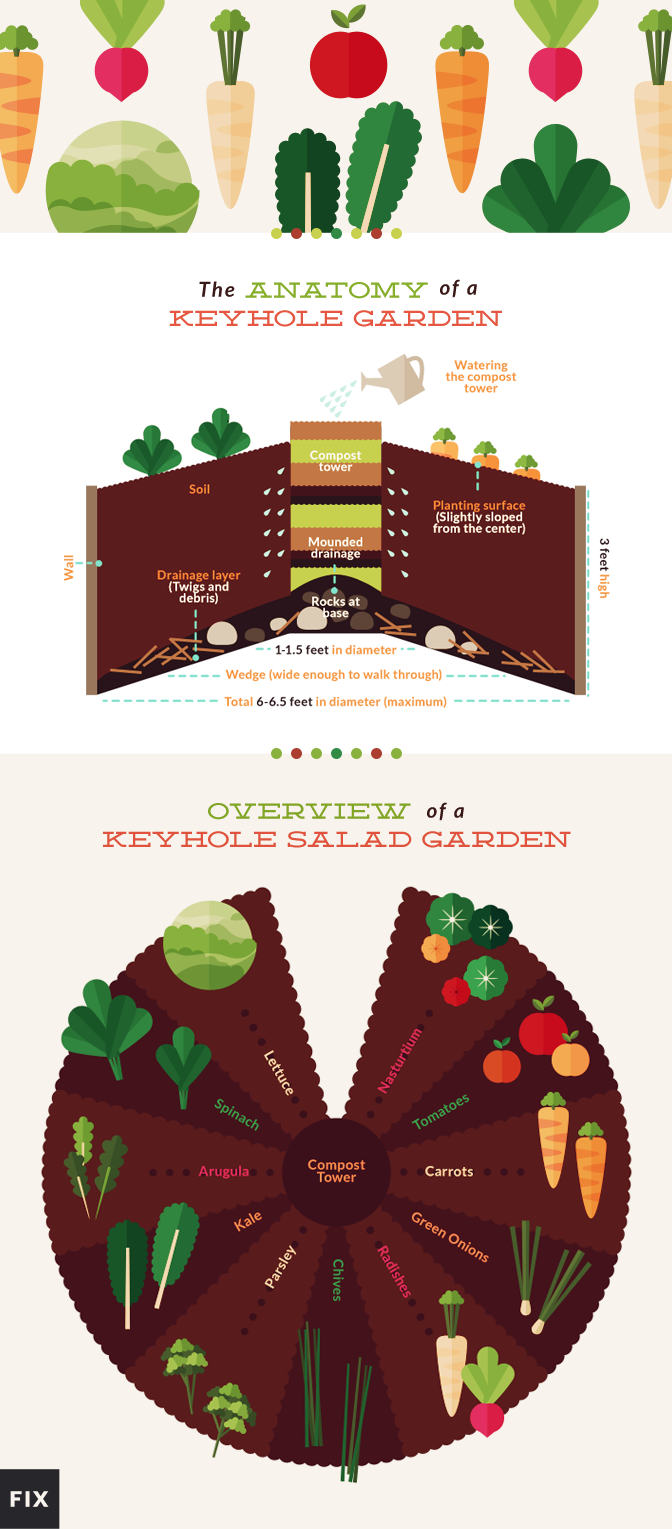
Despite all of its function, the setup of a keyhole garden is fairly simple. Using a garden hose, mark out a circle about six feet wide. Then, mark a notch out of the circle roughly a foot wide that narrows slightly toward the center (think of a slice of pizza with a flattened end instead of a point). At the center of the circle, create another smaller circle (about a foot wide): this will be your compost bin.
Next, you'll need to create the sides of your keyhole garden and give some structure to the center compost bin. We'll use bricks as an example: Simply alternate the bricks in a dry stack (meaning no mortar necessary), circling around in layers until you reach about waist height.
At the center of the keyhole garden, add the compost basket. Typically this circle is surrounded by a material such as chicken wire and is about one to one-and-a-half feet wide. The goal is to hold the compostable materials in place while allowing for drainage out to the surrounding garden. For added stability, countersink the chicken wire into the ground. The top of the compost basket often extends above the top of the soil in the bed, and some bins use a cap to deflect water into the garden itself. The first few inches of the compost basket's bottom are filled with drainage materials such as rocks, the rest holds kitchen and yard waste that decomposes and turns into compost.
Although the compost bin is filled with kitchen waste, the planting space of the keyhole garden should be filled with easily biodegradable materials, such as newspaper, shredded old phone books, and cardboard, for example, as well as garden soil. The top of the soil in the planting area should gently slope away from the compost basket to encourage drainage and the movement of compost into the keyhole garden's growing area.
Plants and Planting for a Salad Keyhole Garden
Nearly any plant combination will work in a keyhole garden, but theming the planting is a fun method to try out. For my salad garden, I'm planting a range of crunchy, yummy plants. Some will be ready for early springtime salads, while others will add flavor later in the season. The key plants I'm planning to include are:
- Lettuce
- Spinach
- Arugula and other specialty greens
- Kale
- Parsley
- Chives
- Radishes
- Green onions
- Carrots (to harvest as baby carrots)
- Cherry tomatoes
- Nasturtiums
There are two ways of grouping plants in a salad keyhole garden. You can group the individual plants together (all the lettuces, for example) or you can plant taller items at the center of the garden, with lower-growing salad fixings at the front. You'll need to water well until the plants are established – then sit back, watch your salad keyhole garden grow, and eat the tasty results of your labor.












